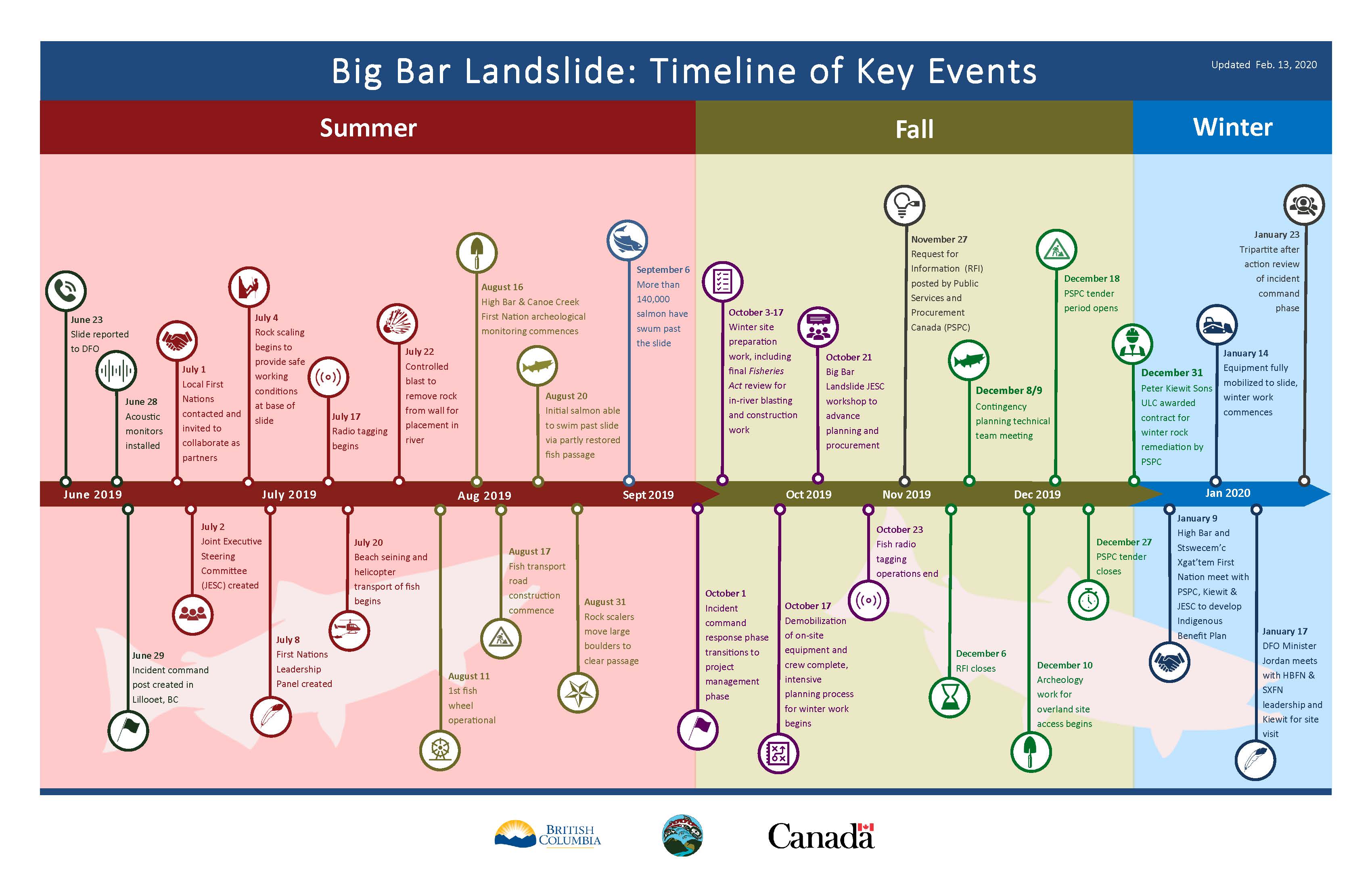Big Bar 2019 response
After the June 23, 2019 a landslide, the B.C. government used an Incident Command System (similar to what’s typically used by the BC Wildfire Service to respond to fires), a Unified Command was established to lead the remediation response and included all levels of government (First Nations, provincial and federal).
On this page:
Big Bar response
This team included field and support staff from Fisheries and Oceans Canada, the Canadian Coast Guard, the First Nations Fraser River Aboriginal Secretariat and the BC Wildfire Service, as well as scientists, engineers, First Nations fisheries crews and archaeological monitors, biologists, rock scalers, hydrologists and many others.
In September 2019, due to decreasing water levels and the efforts of rock scalers, some migrating salmon were able to pass naturally past the site of the landslide. The Province, the Government of Canada and First Nations have continued to work together to ease fish movement past the site. The effort to re-establish fish passage has included blasting rocks and widening the river channel. The installation of a nature-like fishway, a Whooshh Passage Portal System and other mitigation measures were undertaken to limit disruption to fish during the 2020 migration season.
Read the past Information Bulletins on the Big Bar landslide response and details about the work that’s being done (LINK).
First Nations' role in the Big Bar Landslide response
From the onset of the incident at the Big Bar Landslide, a government-to-government-to-government response was envisioned and implemented. An innovative collaboration between First Nations, Federal, and Provincial governments has been formed in the spirit of reconciliation and recognition of First Nation’s place at the table.
Within a week of the slide being reported, First Nations representatives from the Fraser River Aboriginal Fisheries Secretariat participated in early strategic planning that included First Nations engagement. The Unified Command then reached out to First Nations to invite participation on the Big Bar Landslide First Nations Leadership Panel. The Panel includes 47 participants from 30 communities and Tribal Councils from the Fraser River and Marine approach First Nation groups that have an interest in Fraser salmon stocks. The Panel, which makes decisions by consensus, provides guidance and decision-making on strategies to address the landslide. The panel provides input, reviews response options and endorses options, all while considering cultural sensitivities and incorporating First Nations’ traditional ecological knowledge and perspectives.
First Nations continue to be involved as the incident transitions into a new phase of response. First Nations’ traditional ecological knowledge and perspectives have been vital to the fish health and environmental unit, the Joint Executive Steering Committee and project director positions. This traditional ecological knowledge underpinned fish capture methods that were used before fish achieved natural passage which included: fish wheels, beach seining and dip netting. Local First Nations Cultural Heritage experts were able to conduct assessments of ongoing works to ensure cultural values were preserved.
The landslide has impacted numerous First Nations communities and organizations in British Columbia. Salmon are critical to Indigenous communities for food, social, and ceremonial needs. Leadership and delegates from communities across BC have taken helicopter overview flights. These flights are vital to understanding the scope and scale of the incident. Participants can subsequently share response updates with their communities from a firsthand perspective.
As such, the Big Bar Landslide response has set a precedent for future cooperation and to ensuring that information flows as efficiently as possible throughout communities and organizations across the province.


